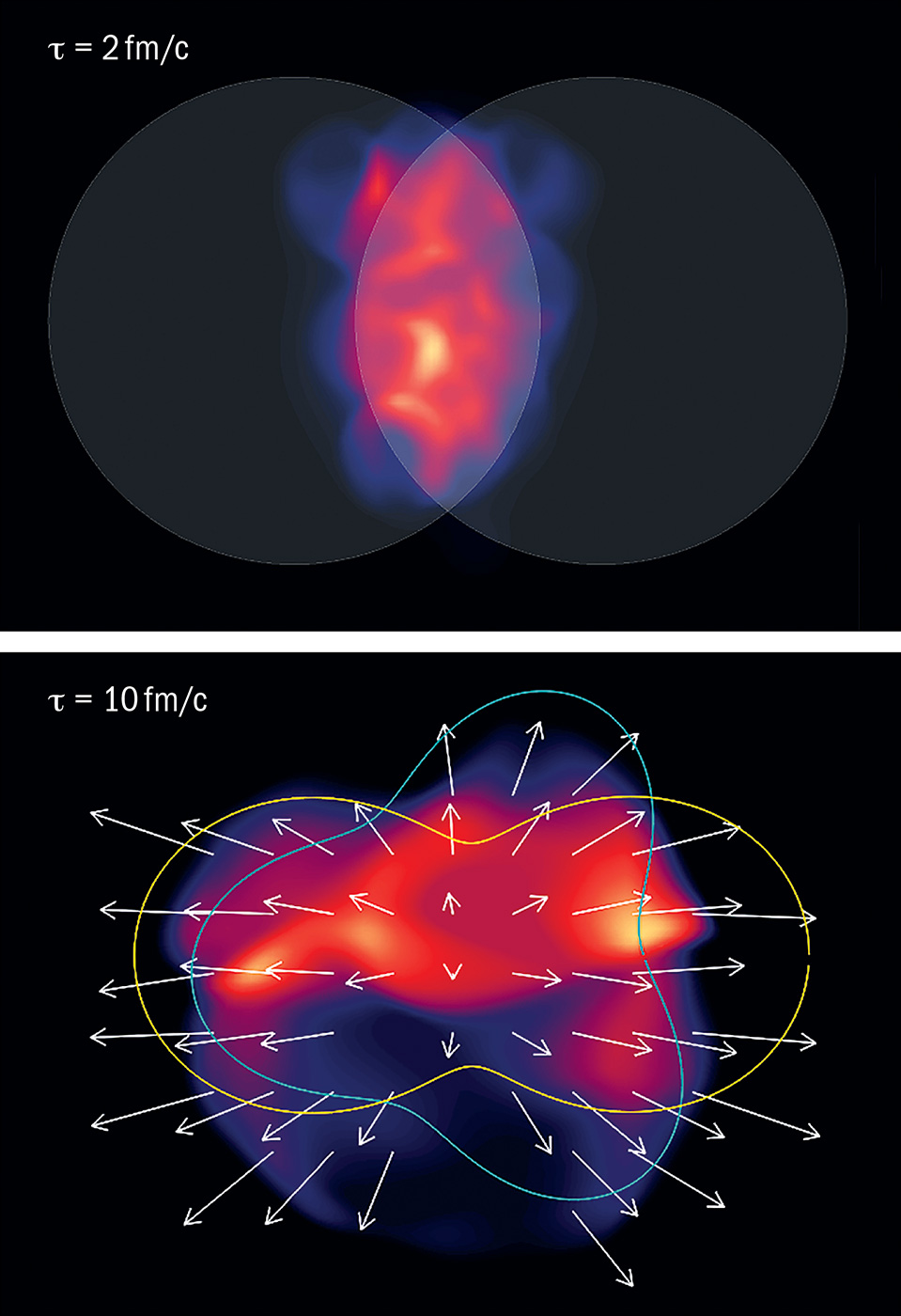
In heavy-ion collisions such as lead-on-lead, the produced Quark-Gluon Plasma (QGP) region may be spatially eccentric. This means it can be physically longer along one axis than another.
The high pressure at the centre of the QGP decreases to zero pressure in the vacuum outside the QGP region. The pressure gradient is therefore larger along the short axis than along the longer axis. This larger gradient leads to a stronger hydrodynamic flow for the particles emitted along the short axis than those along the long axis, increasing their momentum.
As a result, measurements of particles at fixed momentum find that there is a higher yield of particles in a quadrupole pattern along the short QGP axis. This is quantified as a second-order Fourier coefficient v2, known as the azimuthal momentum anisotropy.
The illustration shows the evolving energy density of the QGP created in a non-central collision. Pressure gradients act on the initial geometrical anisotropy to create a final velocity field (arrows), which may be decomposed into elliptic (yellow), triangular (teal) and higher order components. (Image: MUSIC/arXiv:1209.6330)
